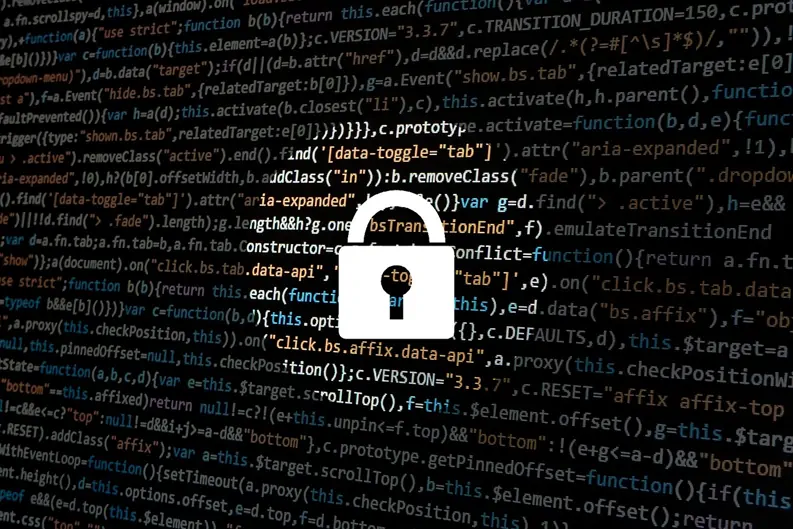Writing code is a work and an art, which means there is always a margin of error. We’re all humans, and making mistakes is part of the process. However, while mistakes can serve as learning opportunities, there is always a chance that someone will exploit them for nefarious purposes.
Cyber criminals prey on errors, bugs, and any mistake they can find. In fact, they often launch attacks for the sole purpose of assessing your code and finding vulnerabilities. Once they find the vulnerability that suits their purposes, there’s no telling what kind of chaos they’ll rain down on your applications, repositories, devices, and connected network.
As a result of a security breach, you can lose your data, and sustain financial and reputational damages. This is true whether you’re selling your code, selling customized software, or maintaining a network. You can avoid many security pitfalls by implementing the following best practices for secure coding.
What Is Secure Coding?
The term secure coding refers to a set of standards and guidelines intended for use during software development. The goal of secure coding is to make the code as secure and stable and stable as possible. This is why secure coding practices should be implemented at all stages of the development process.
Organizations and professionals often define secure coding differently. It can be a part of the organization’s policy or particularly set for a specific project with special security needs. You should also ensure that your secure coding guidelines include privileges and roles.
You can use public secure coding standards as is, or as a template when writing your policy. These standards are often created by a community of developers and cyber security professionals who are experts in their respective fields.
A good resource for secure coding is the website owned and maintained by the Open Web Application Security Project (OWASP). The website offers free educational resources for software security, as well as a forum for the OWASP community. You can use OWASP as a reliable reference for secure coding standards.
Software Vulnerabilities Examples
Buffer-overflow
When your code uses a fixed-length buffer, and the application tries to store data that has a larger length, a buffer-overflow occurs. As a result, data may be overwritten. This is a security vulnerability that can cause the program to abnormally abort (segmentation fault). Secure coding can prevent buffer-overflow risk through the use of dynamic memory allocation.
Integer-overflow
This security vulnerability happens when an arithmetic operation result is an integer which is too large to be represented within the available variable type. A wrong numerical value will be stored, leading to severe software bugs. To secure your code, check it for integer overflow. This will prevent software bugs and exploits that can be introduced by integer-overflow.
Format-string attack
Format-string attack is a function that performs formatting with potential security vulnerabilities. For example, a specific input string which is formatted by printf in C, can lead to a program crash. This can be used by an attacker to sabotage your application. You can prevent this by blocking malicious input strings.
8 Best Practices for Secure Coding
1. Security requirements definition
You should define security requirements at the earliest stages of your project. Any security coding guidelines should be set according to the predefined security requirements and software specs, ensuring adherence to secure coding practices. Doing this in the beginning can help you ensure your code complies with all of the requirements.
2. Simulate threats
When you plan your project, build a model that simulates all the known threats in a potential environment. This model should indicate what are the potential risks, and which strategy should be used to protect your code from them.
3. Use a secure coding standard
According to the programming languages you are using, and the environment in which your applications are running, develop a secure coding standard for your development teams. This standard will serve you as a policy during the development phase, and afterwards if you’re in charge of maintenance. You can also create a template standard, and revise it as needed.
4. Input validation
One of the main sources of security vulnerabilities is external data, which is used as input to your code. All input types must be validated and blocked to ensure no suspicious data enters your codebase. This includes input files that the user can change and command-line arguments.
5. Pay attention to compiler warnings
Many developers tend to mask or ignore the compiler warnings. This is not recommended, since compiler warnings may flag security vulnerabilities. Your secure coding guidelines should direct all parties involved not to ignore these warnings.
6. Avoid complexity
The complexity of your design increases the chances of having security vulnerabilities in your applications. It may also make it harder to identify them and fix them. Keep your design simple and small.
7. Limit process privilege
Always take into consideration a worst-case scenario in which an attacker has access to your code. In such a scenario, the attacker might execute any arbitrary code. If your processes are not configured with the least privileges they need, the attacker might exploit a process with elevated privileges.
8. Automatic code generation
Use automatic code generation tools as much as possible. These tools can be configured to follow secure coding guidelines and policies, and are typically free of human errors. This will increase the overall security of your code.
Wrap Up
Cybercriminals launch advanced and sophisticated attacks with the sole purpose of finding new security vulnerabilities they can exploit. Human error is inevitable, but you can set secure coding standards to prevent as many bugs and errors as possible. You should constantly update your secure coding standards to include new vulnerabilities. Today there are many free and paid tools for automating this process, so be sure to find a solution that works best for you.









